Known as the Vulturine Parrot, Pesquets Parrot (Psittrichas fulgidus) captivates observers with its appearance and feeding habits. Originating from the rainforests of New Guinea this birds distinct characteristics and behaviors intrigue both bird lovers and scientists.
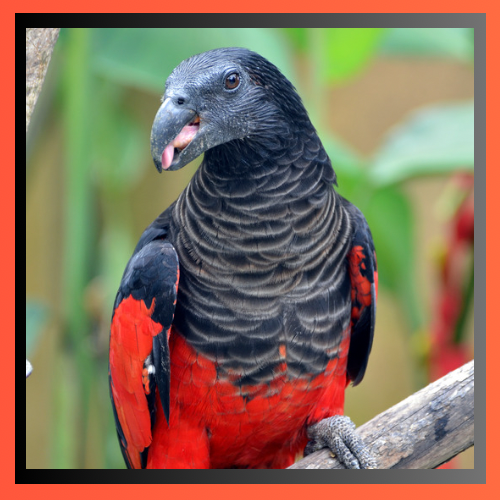
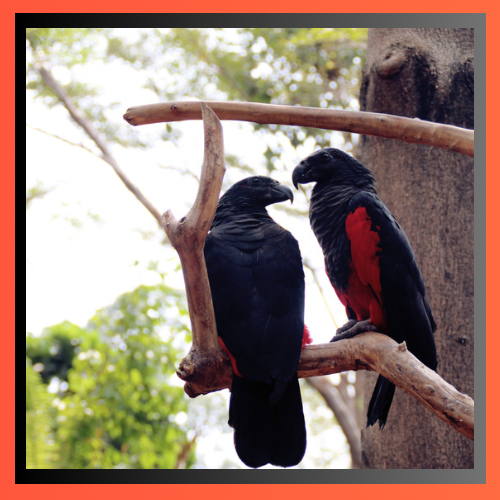
Distinctive Appearance and Physical Features
Easily distinguished by its feathers accented by vibrant red patches, on its belly, wings and back, Pesquets Parrot possesses a striking visual allure. Its head is devoid of feathers sporting skin akin to a vulture, which serves to prevent sticky fruit pulp from adhering to its plumage. This evolutionary trait is crucial for a bird that predominantly consumes fruit.
With a length of 46 centimeters and wingspan for navigating the dense rainforest canopy Pesquets Parrot boasts physical attributes tailored for its habitat. Its elongated hooked beak is adept at piercing the skins of figs and other fruits.
Habits and Dietary Preferences
Diverging from parrots, Pesquets Parrot has a diet centered around specific fig species. This dietary exclusivity renders it reliant on the presence of these fruit bearing trees in its environment. The birds sturdy beak and agile tongue are well equipped for extracting the nutrients from, within the fruits.
Pesquet’s Parrot is often spotted searching for food in pairs or small groups. Its loud calls, which range from harsh, to screechy can be heard resonating through the rainforest. These vocalizations play a role in keeping communication among the birds especially during their search for food.
When it comes to nesting and raising their young Pesquet’s Parrots typically choose tree cavities above the ground. They commonly make use of woodpecker holes or natural hollows found in trees as their nesting spots. The female parrot lays a clutch of two eggs, which are then cared for and incubated by both parents for around 28 days. Once hatched both mother and father take turns feeding the chicks until they are ready to leave the nest after 80 days.
Hatched chicks are initially covered with a layer of down that gradually transforms into their striking black and red plumage as they grow older. Young parrots spend months with their parents before venturing out on their own.
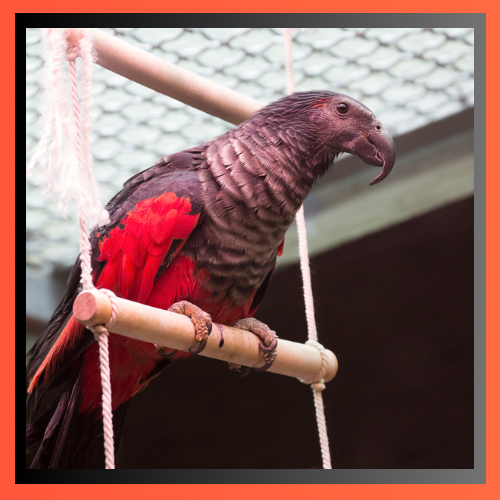
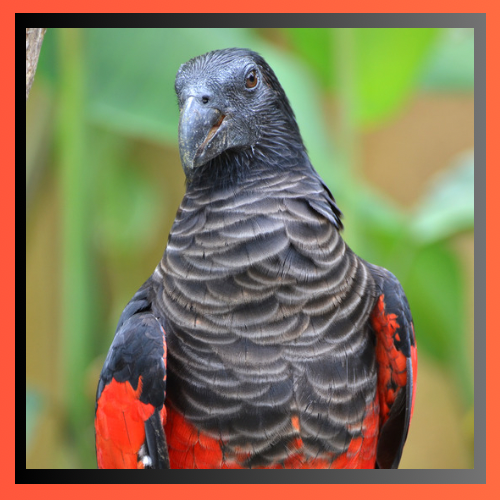
Interesting Facts and Distinctive Features
Unique Appearance: Pesquets Parrot stands out due to its head resembling of vultures and not typical parrots. This adaptation helps prevent fruit pulp from clinging to its feathers.
Specialized Diet: Unlike parrot species, with diverse diets Pesquet’s Parrot primarily feeds on figs setting it apart with its specialized eating habits. This particular specialization impacts how the parrot searches for food and chooses its living environment.
Distribution: Pesquet’s Parrot can only be found in the rainforests of New Guinea at lowland and foothill areas. This limited range makes it especially susceptible to losing its habitat due to changes.
Cultural Importance; In regions of New Guinea Pesquet’s Parrot is hunted for its feathers, which are used in traditional rituals and outfits. This hunting activity, combined with habitat loss raises concerns about the species conservation status.
Conservation Efforts and Threats
The survival of Pesquet’s Parrot is threatened by factors in its habitat. The destruction of habitats caused by logging and agricultural expansion poses a danger. Additionally, hunting for its feathers contributes to a decline in population numbers. Conservation initiatives focus on preserving habitats and collaborating with communities to reduce hunting activities.
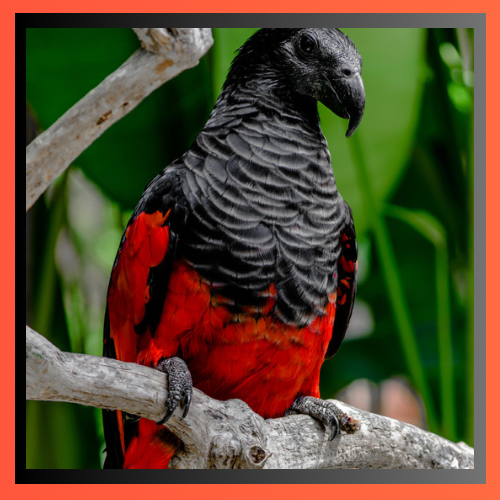
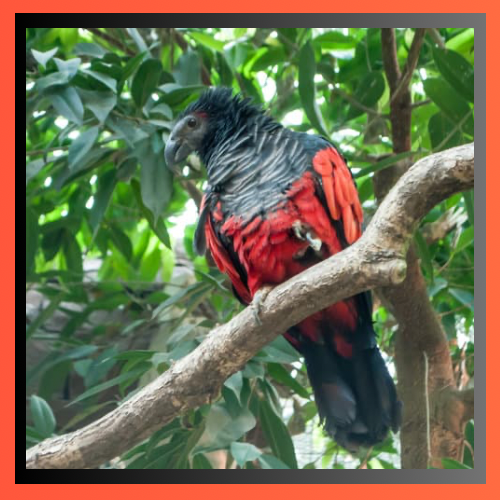
Conclusion
With its appearance and specialized dietary habits Pesquet’s Parrot stands out as one of the fascinating birds in New Guinea’s rainforests. It is essential to comprehend and safeguard this species to uphold the biodiversity of its ecosystem.
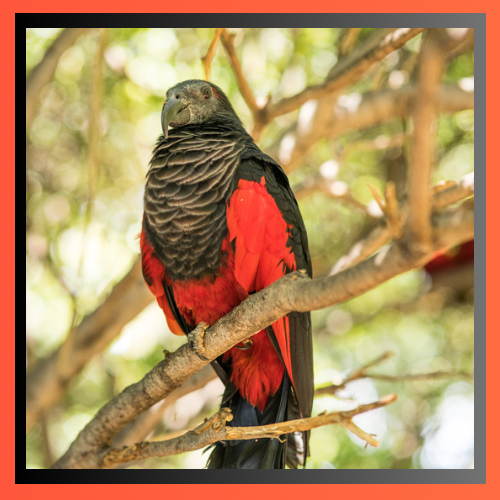
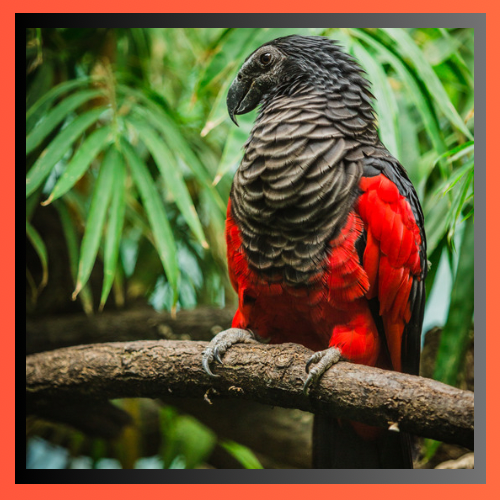
References
1. Parrots of the World. https://www.jstor.org/action/doBasicSearch?Query=Pesquet&so=rel
2. Birds of the World. Cornell Lab of Ornithology. https://birdsoftheworld.org/bow/species/pespar1/cur/introduction


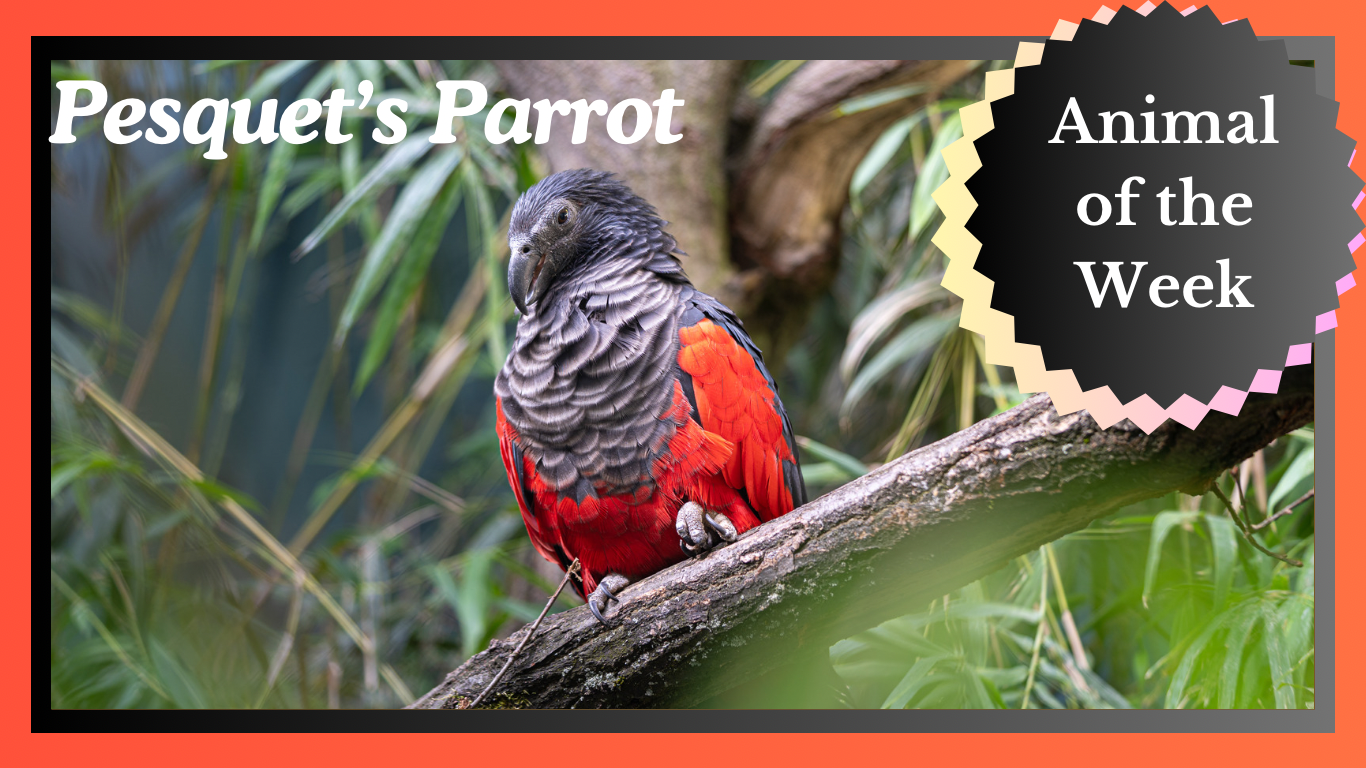


Thanks for sharing. I read many of your blog posts, cool, your blog is very good.
Thanks for sharing. I read many of your blog posts, cool, your blog is very good.
Thanks for sharing. I read many of your blog posts, cool, your blog is very good.
Thanks for sharing. I read many of your blog posts, cool, your blog is very good.
Thank you, your article surprised me, there is such an excellent point of view. Thank you for sharing, I learned a lot.
Thank you, your article surprised me, there is such an excellent point of view. Thank you for sharing, I learned a lot.
Thank you, your article surprised me, there is such an excellent point of view. Thank you for sharing, I learned a lot.
Thanks for sharing. I read many of your blog posts, cool, your blog is very good.